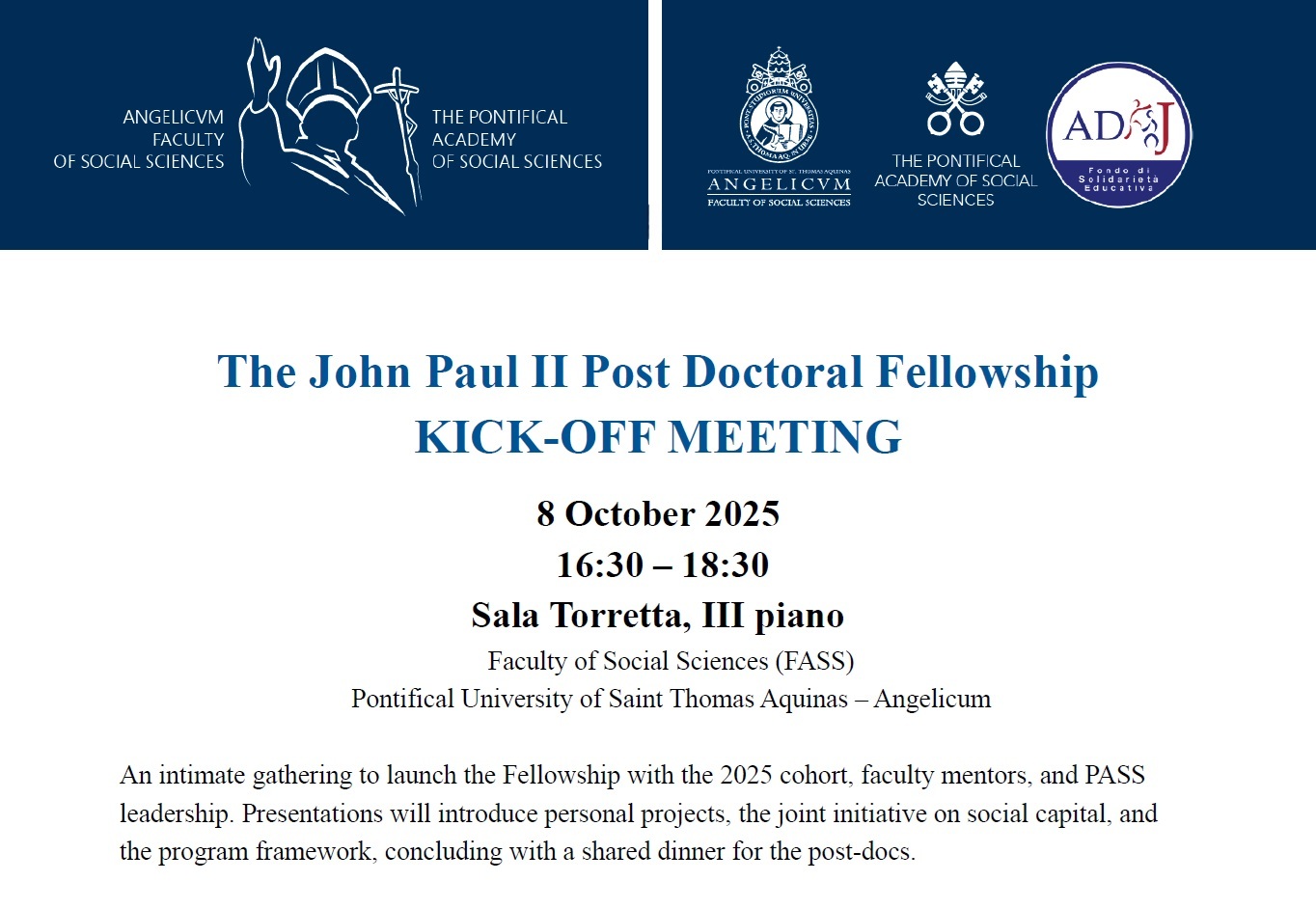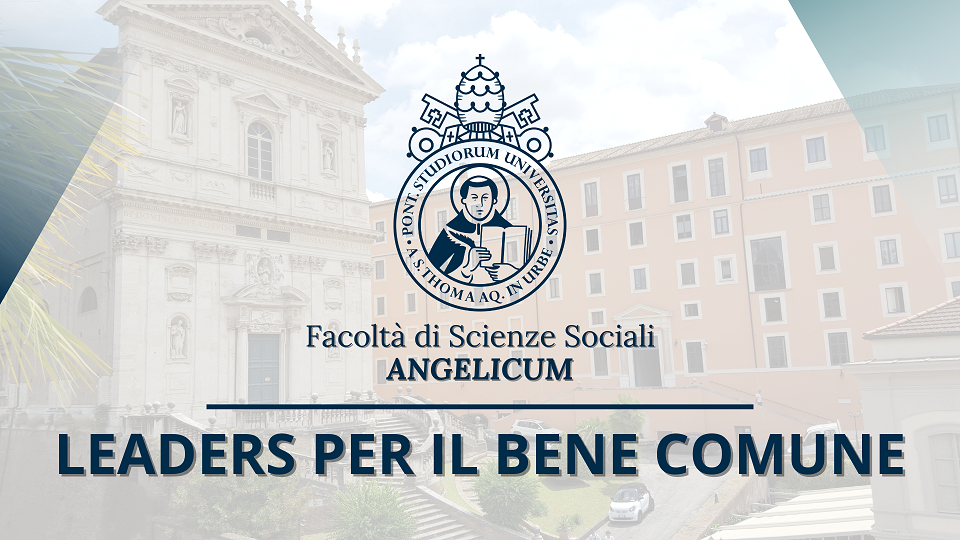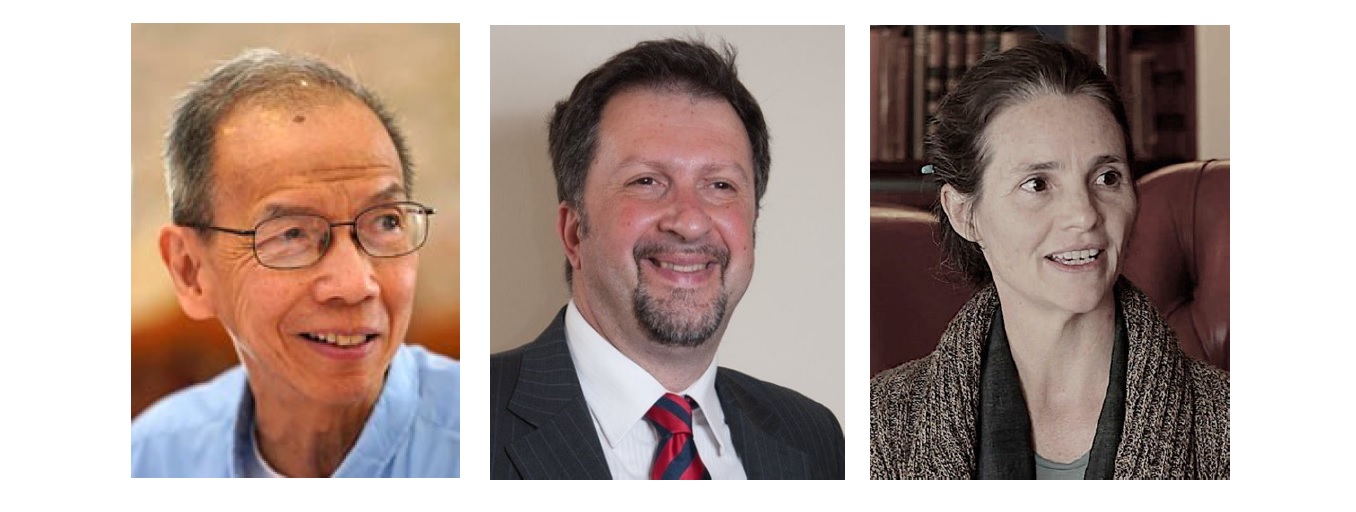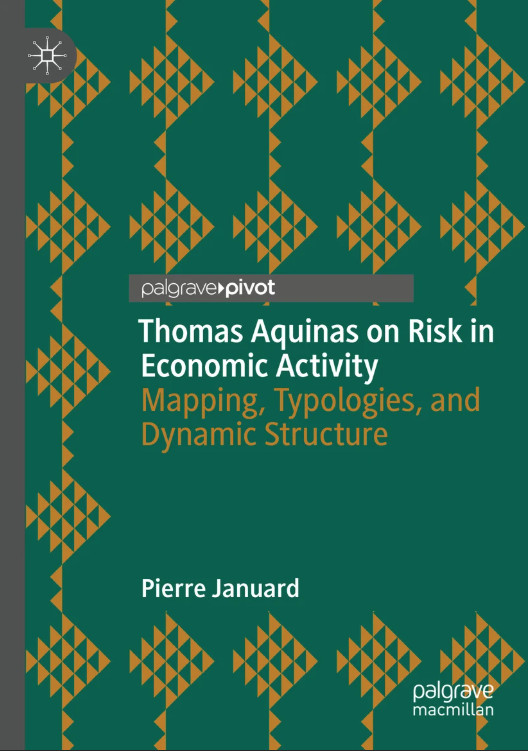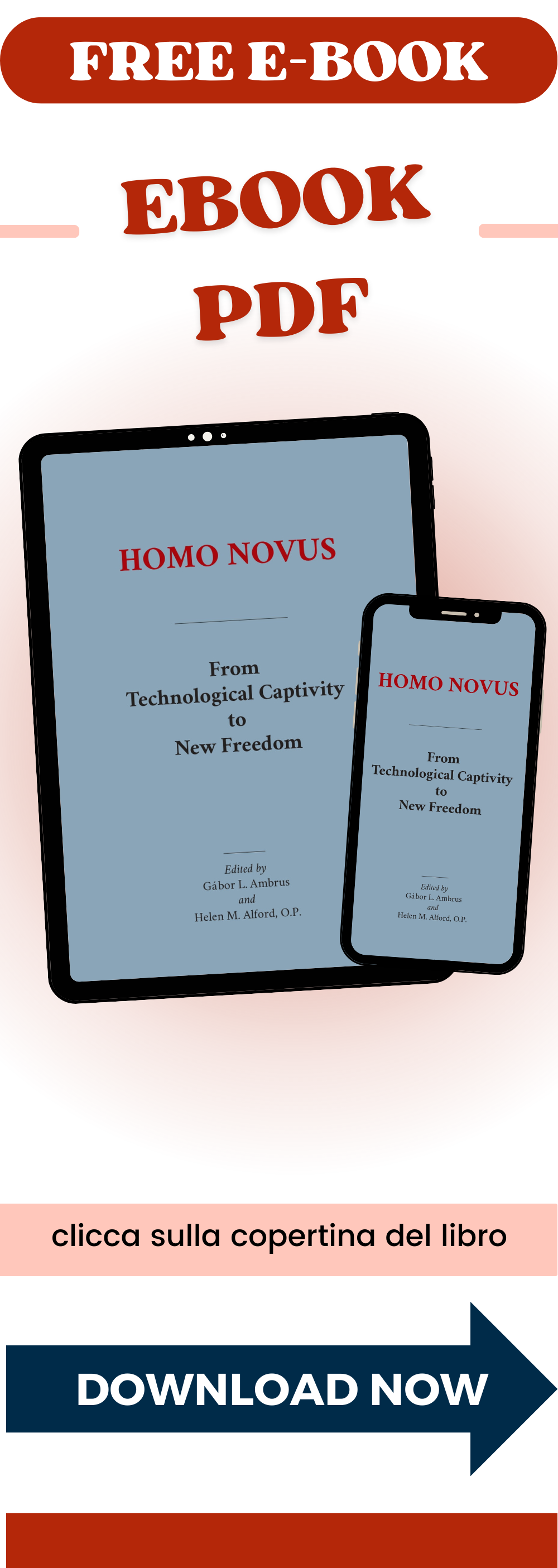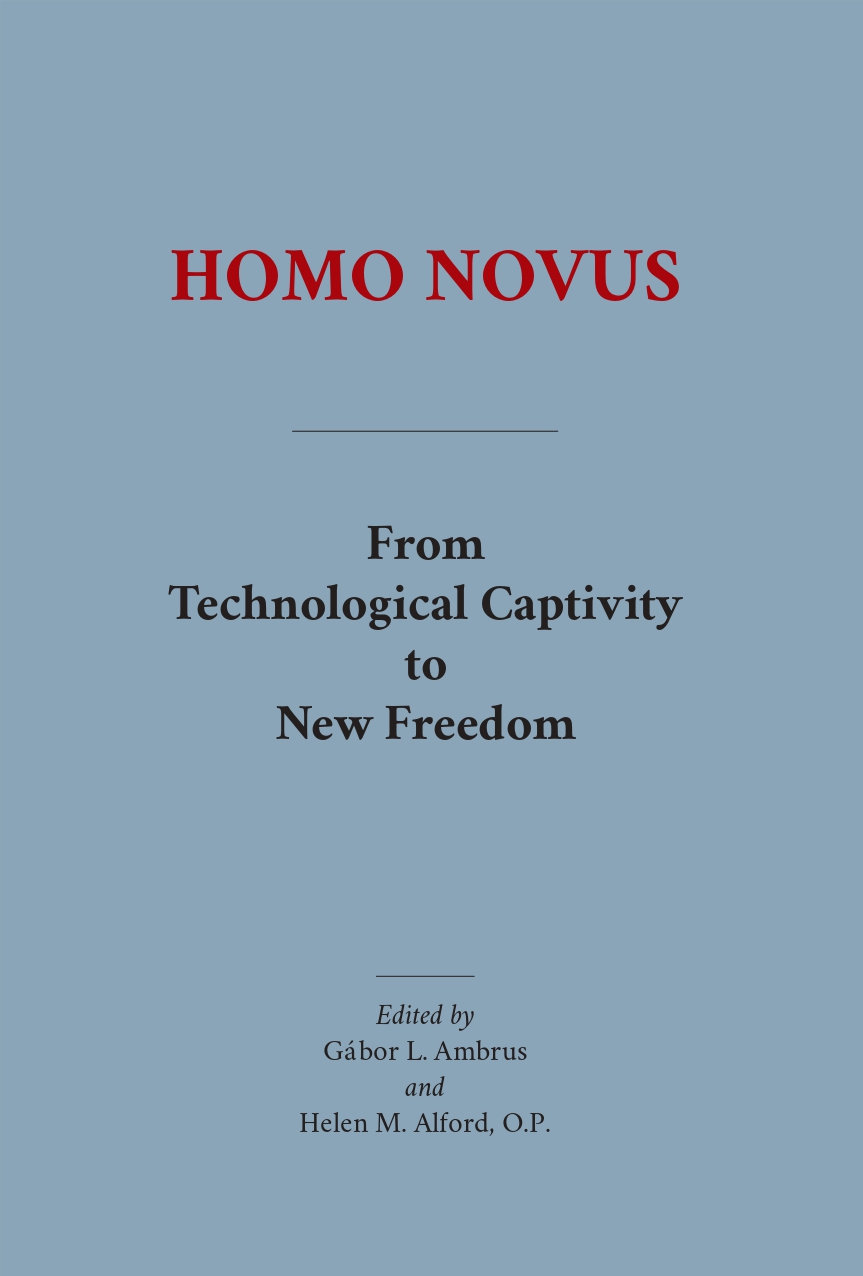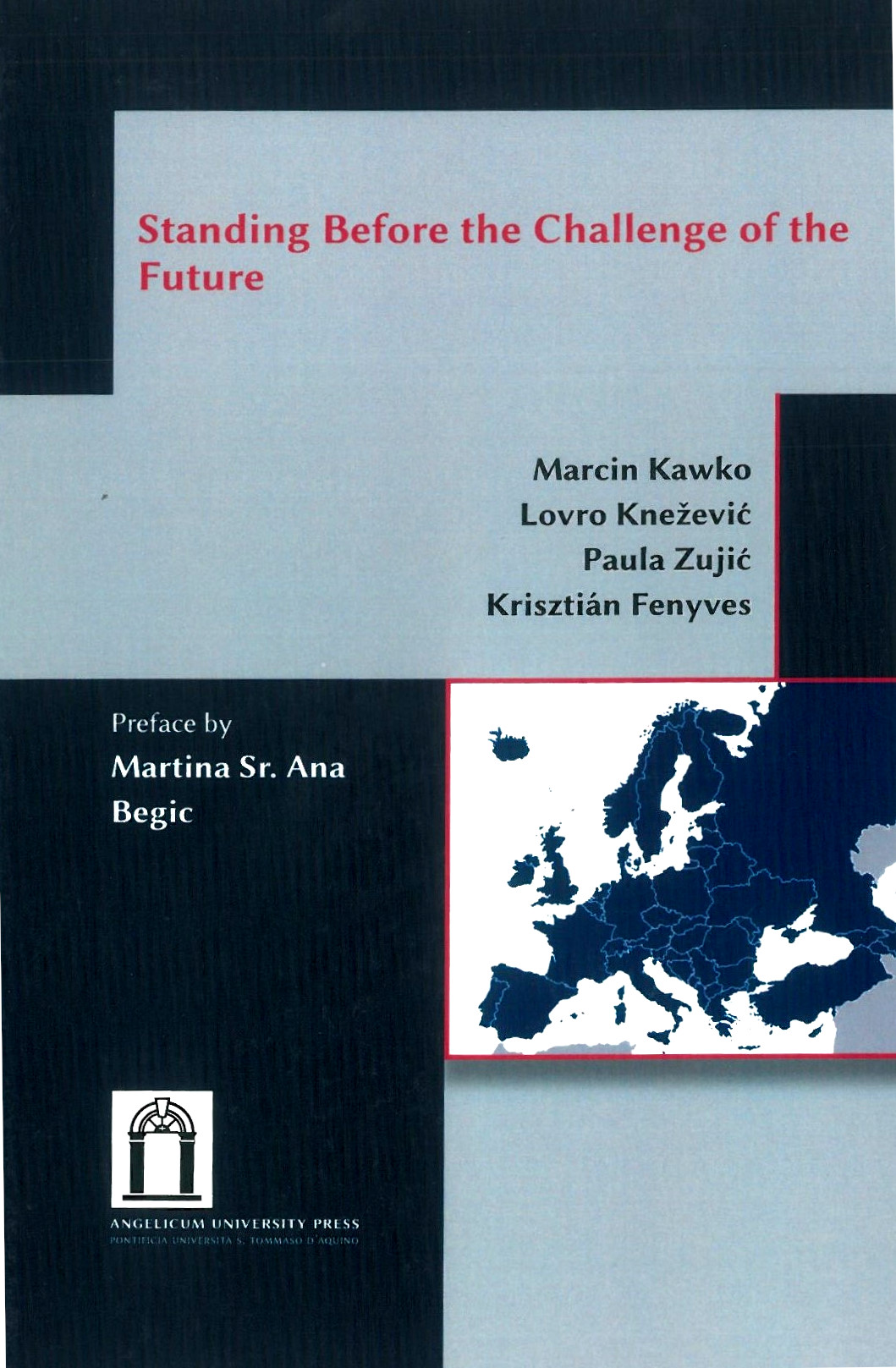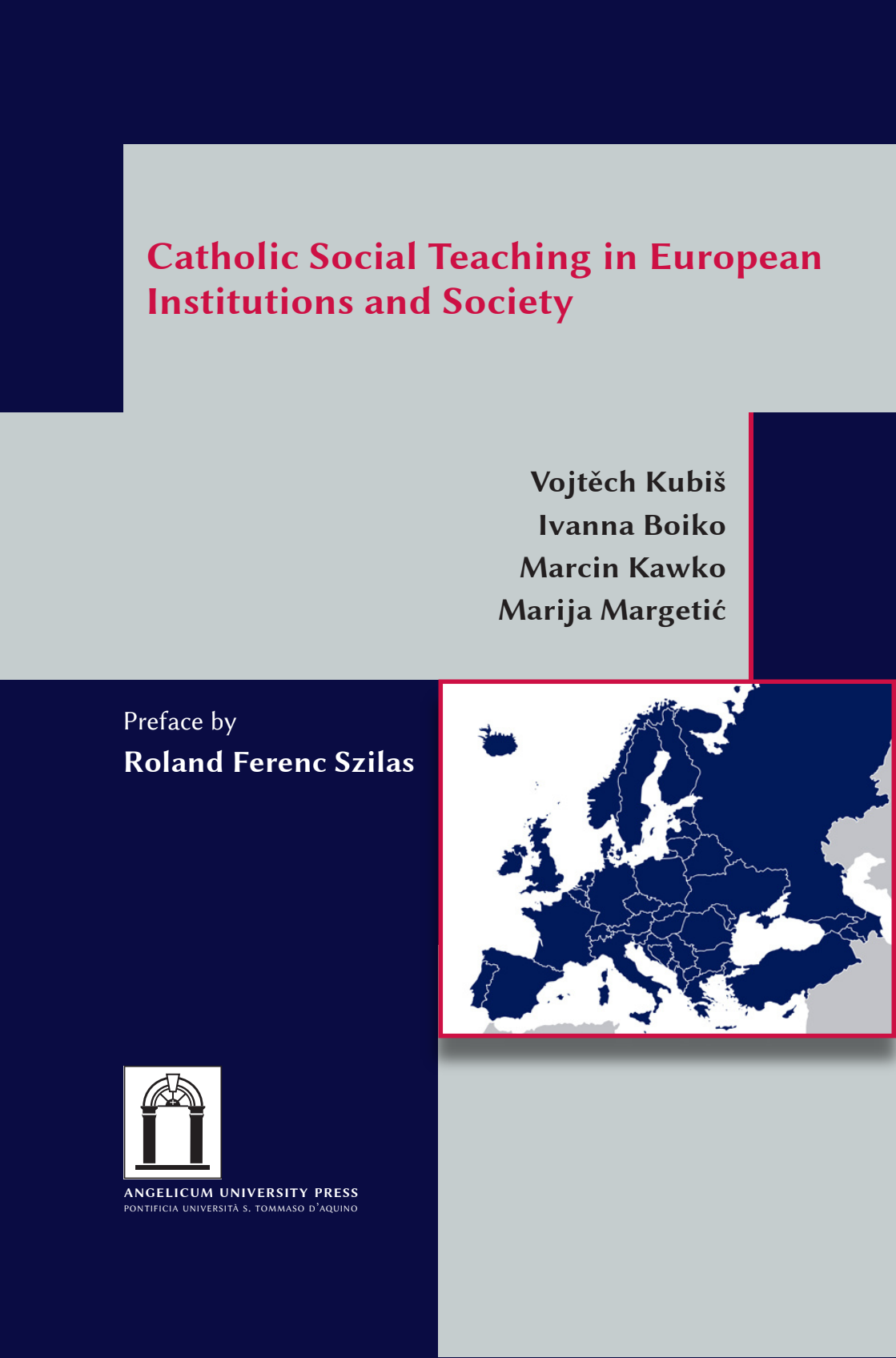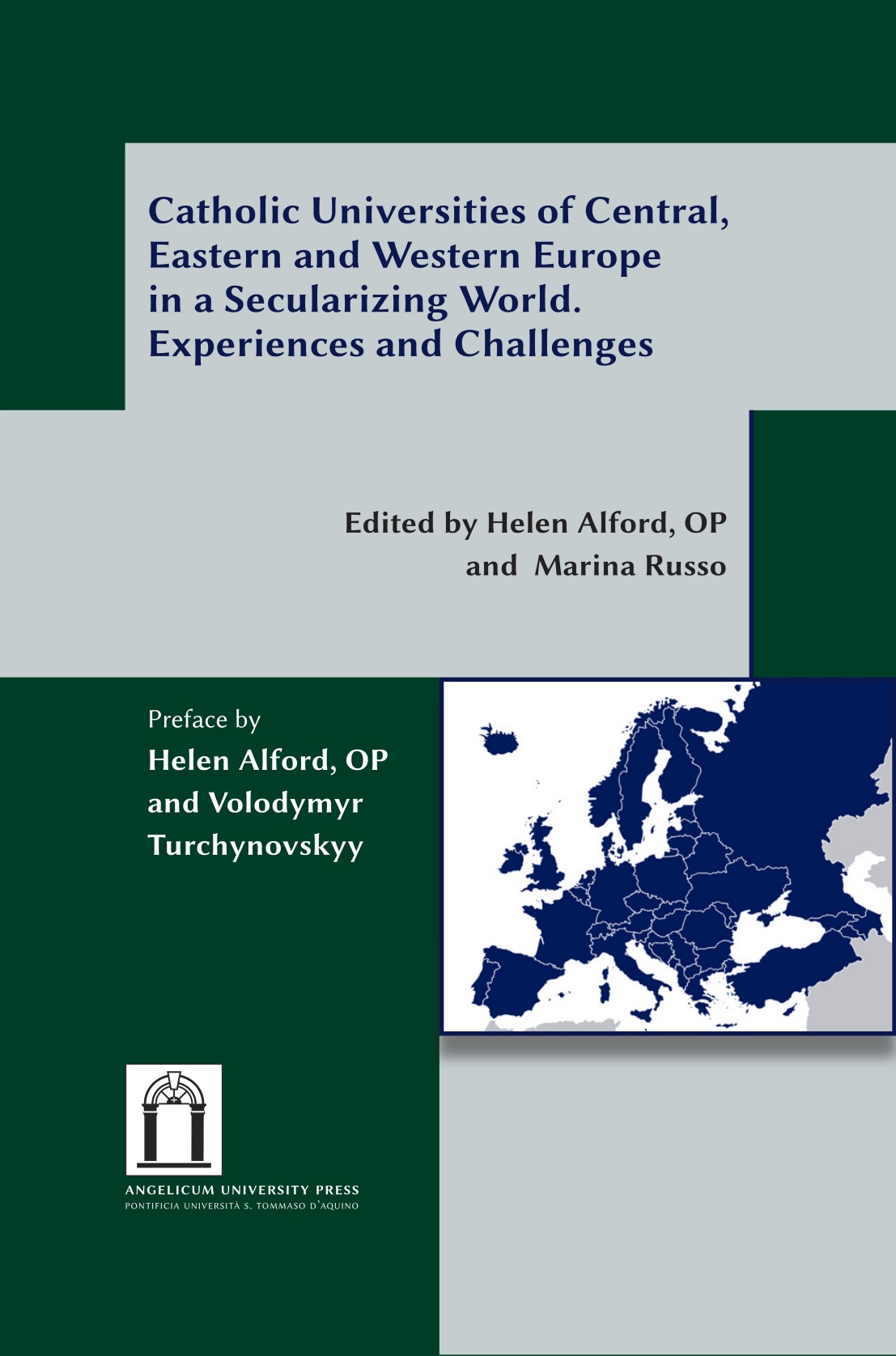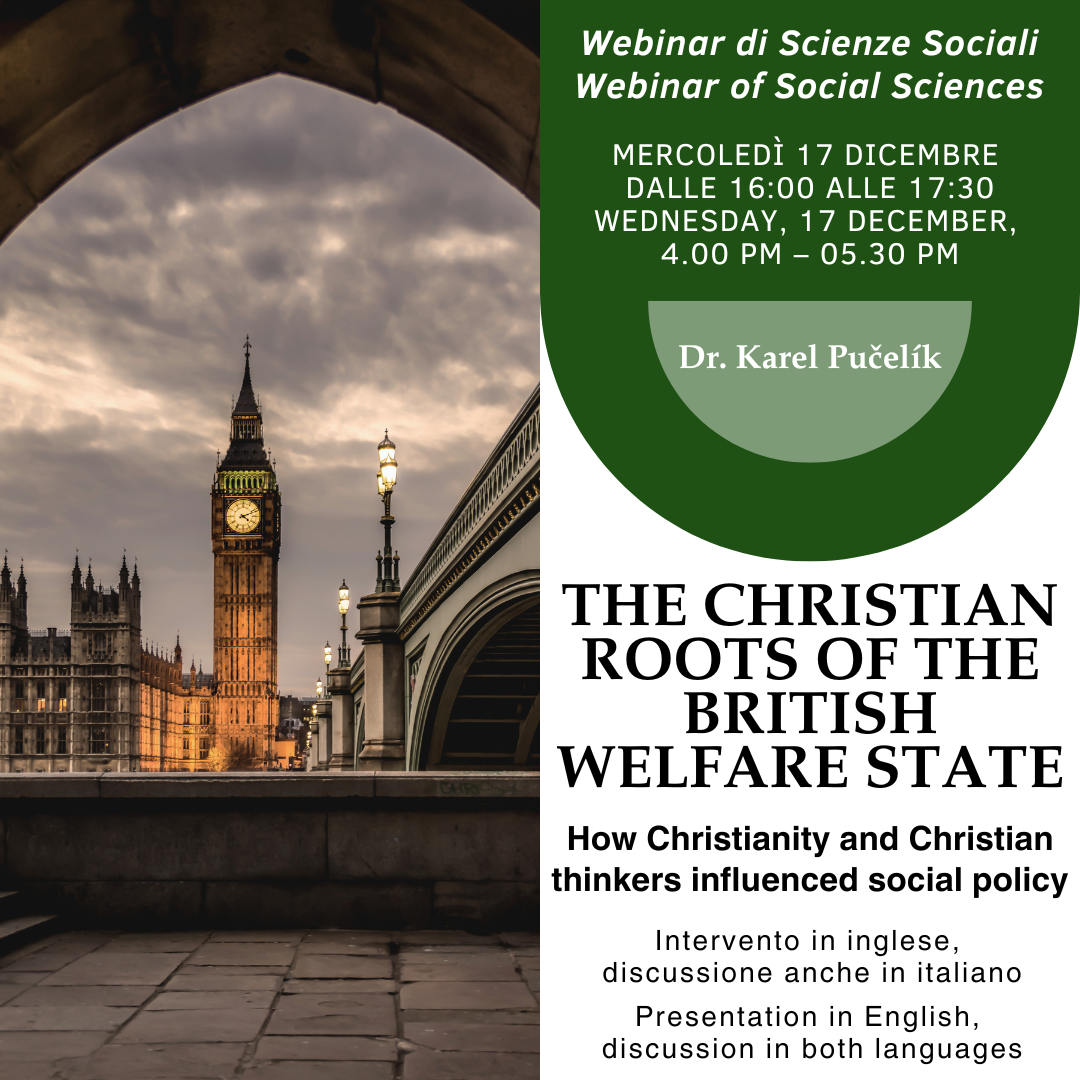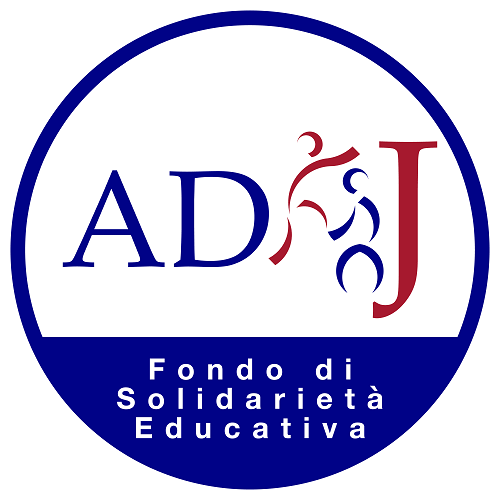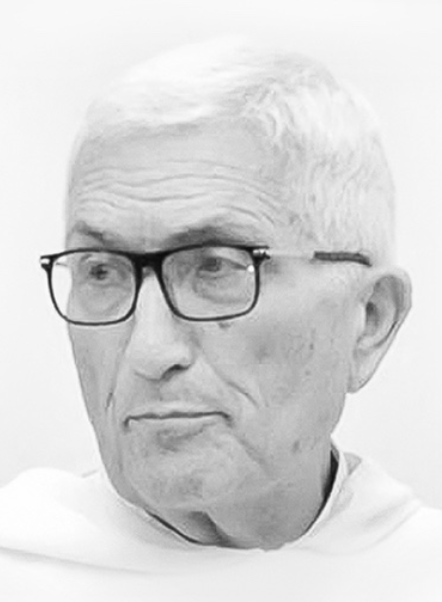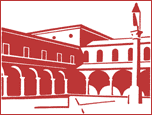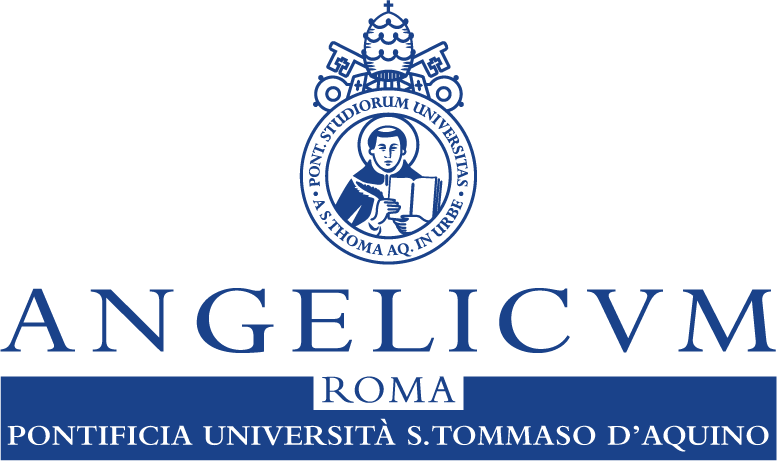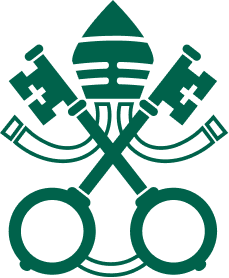 In February 2003, OIKONOMIA carried two essays pertaining to Islamic Banking: “Developments in Islamic Banking” by Helen Alford and “The Islamic Banks” by Etienne Renaud. This paper surveys developments in Islamic banking since those excellent papers were published. Even though the jury is still out as regards the future of Islamic banks, this paper seeks to shed more light on the issue so as to enable one to formulate better answers to the two questions raised in Renaud’s paper. The first asked of its readers what should be ‘our’ judgment regarding the establishment of Islamic banks while the second asked: “What is the real impact of these Islamic banks on the world banking system” and “are they really viable”? This paper cannot fully answer these questions, but it reports on the develoments in the field which, hopefully, can make it easier for Renaud’s readers to find good answers.
In February 2003, OIKONOMIA carried two essays pertaining to Islamic Banking: “Developments in Islamic Banking” by Helen Alford and “The Islamic Banks” by Etienne Renaud. This paper surveys developments in Islamic banking since those excellent papers were published. Even though the jury is still out as regards the future of Islamic banks, this paper seeks to shed more light on the issue so as to enable one to formulate better answers to the two questions raised in Renaud’s paper. The first asked of its readers what should be ‘our’ judgment regarding the establishment of Islamic banks while the second asked: “What is the real impact of these Islamic banks on the world banking system” and “are they really viable”? This paper cannot fully answer these questions, but it reports on the develoments in the field which, hopefully, can make it easier for Renaud’s readers to find good answers.
One telling development in Islamic banking is the emergence of the term “Islamic Financial Services Industry” to describe what used to be covered by the term “Islamic banks”. The change in terminology is symptomatic of the changes taking place in the industry. Islamic banking activities are being carried out not only by Islamic banks that are indigenous to Islamic countries but also by the subsidiaries of major Western banks, such as Citibank and HSBC, who have joined what was, for all intents and purposes, a niche market. That such major players are making efforts to be more attractive to their potential Muslim customers is an interesting new development. The fact that heavyweight banks are making special efforts to cater to their beliefs reflects the importance of faith to contemporary Muslims in matters involving their wealth. The quality of such faith, the extent to which it truly reflects the Qur’anic and Prophetic traditions, the extent of resemblance between it and the Islam of Ghazali, Ibn Rushd, Saladin and Rumi, the adjustments it makes to modernity, and, lastly, the extent to which it can be used by vested interests in the Islamic countries and elsewhere for ulterior motives is another story not entirely unrelated to, but beyond the scope of, this study.
A recent visit to Bahrain showed some of what is developing in the Islamic financial industry. Bahrain’s desire to become the centre of the global Islamic financial industry seems quite obvious. One manifestation of this is the promotion of products, such as takaful (an Islamic form of insurance) via mega billboards on the streets of Bahrain. The message stated prominently that the products being advertised were Shari’a compliant. This island state was the venue of a conference held in March 2006 dealing with accounting, finance, and commerce from Islamic perspectives. From conversations at the conference it was clear that even topics such as adapting derivatives and the hedging of risk are being seriously looked at by banks and consultants in the industry. There are institutions in the Gulf countries promising special prizes via lotteries to those subscribing to their financial offerings. This is a noticeable change since as late as 2003, when there was considerable controversy surrounding the ruling of scholars of Al-Azhar regarding the permissibility of fixed rates of return.
A brief article in Newsweek (Matthew, October 31, 2005) succinctly surveys what is perhaps the most significant development in the Islamic financial service industry, the emergence of the international banks as major players. Since Citigroup set up a subsidiary to carry out Islamic banking in Bahrain in 1996, other International banks have joined the field: HSBC, Société Generale, BNP Paribas, Deutsche Bank, and Standard Chartered. Citibank’s Islamic subsidiary has deposits of more than $6 billion while the Bahrain branch of Al Baraka has a little over half a billion. According to the Bahrain Tribune (March 26, 2006), the United International Bank (UIB), with paid-up capital of $1 billion and authorized capital of $3 billion, will be the largest Islamic bank in the world when it starts up operations in September 2006.
Along with the international banks, accounting and consulting firms have arrived, such as Ernst & Young and KPMG. Such Western players in the financial service game are employing Islamic scholars to give themselves an aura of credibility and thus promoting their products as Shari’a-compliant, a phrase very much in vogue in the Islamic Financial Services sector. In 1996, Dow Jones launched its index of Shari’a compliant stocks and since then others have emerged around the world. This has allowed mutual funds to become a feature of the Islamic financial industry and their services made available to Muslim investors. The Islamic indices now number more than 40. Matthews notes that in 2004 “Islamic stocks” outperformed the market by 5%. In a recent paper, Khatkhatay & Nisar analysed the screening methods used by three of these indices, proposing a set of norms which they consider to be more in line with Islamic requirements than those currently in use (2006).
Yet another development is the birth of the Islamic Financial Services Board (IFSB) with its offices in Kuala Lumpur, Malaysia. The birth of IFSB was the result of a collaboration between the central banks of Islamic countries with the International Monetary Fund (IMF). Its role is to develop prudent and transparent standards that are Shari’a complaint and deal with issues such as risk management, capital adequacy, corporate governance, transparency, market discipline and supervisory roles. The IFSB is expected to work towards the standardisation of Islamic financial products and services throughout Muslim countries. Another organisation involved with Islamic banking for some time has been the Accounting and Auditing Organization for Islamic Financial Institutions (AAOIFI), with its offices in Bahrain. They have issued over 50 standards involving accounting, auditing, governance, and Shari’a compliance. Most recently, they have initiated a professional certification process for accountants, leading to the designation of Certified Islamic Professional Accountant (CIPA) status. The Islamic Development Bank located in Jeddah, Saudi Arabia, has taken the lead in setting up the International Islamic Financial Market (IIFM) to promote and develop liquidity management instruments and markets. They have also set up the International Islamic Rating Agency (IIRA) aimed at providing credit rating services, as well as rating the corporate governance and Shari’a compliance of the Islamic financial institutions.
Along with the entrance of Western banks into the Islamic banking market, there have been institutions emerging in the USA, Great Britain and Canada that seek to provide financial services such as mortgages, leasing, and mutual funds that are Shari’a-compliant. There is considerable interest in the West regarding Islamic finance, as suggested by the Islamic Financial Services Forum organized by the Islamic Financial Services Board and the Central Bank of Luxembourg in November, 2005 (Husain, p.1). The Islamic Bank of Britain and LaRiba in the United States want to meet the needs of middle-class Muslims. Lloyds TSB is reported to be joining a growing number of UK banks that provide Shari’a-complaint products to Muslim customers in the UK, such as current accounts and finance to help with the purchase of homes (Sherrin, 2006).
The current spurt in Islamic finance started after 9/11 when wealthy Muslims brought their money back home to the Middle East fearing the seizure of their assets by American politicians seeking to please their voters. This movement of capital seems to have reversed what took place in the aftermath of the First Gulf war, which, in the words of Renaud, “led to the transfer to Swiss banks of a large proportion of the capital in Middle Eastern Banks.” Asian countries such as Malaysia are seeking to get these funds invested in their countries (KUIM, 2006). The scope of these available funds can best be seen in the growth of what are described as Islamic bonds, sukuk. These are asset-backed, which presumably makes them acceptable under Islamic law, and allows large amounts to be raised. These bonds have been used by governments and corporations in amounts that have reached billions. Citibank and HSBC are the leading players in raising sukuk-related funds. This form of finance emerged in 2000 but its popularity soared after 9/11. In 2004, the total worth of sukuks issued was $6.7 billion, with Malaysia accounting for $4.7 billion. Since then, the largest sukuk raised has been for Dubai Ports, Customs & Free Zone Corporation (PCFC) at $11.4 billion, and was oversubscribed. This is a convertible instrument, allowing for redemption of up to 30% in the form of equity shares in PCFC if it were to go for a public equity offering within the next three years (Islamic Banking and Finance, winter 2006, p. 5).
While the sukuks developed by major Western banks that have the required expertise to float them are helping to raise relatively large amount of capital, the indigenous banks continue along the old familiar path, making mark-up instruments their prime business. In a recent study of two Islamic banks, one in Malaysia and the other in Bahrain, it was found that equity-based transactions took up only a small proportion of the financing provided by these banks-in the single-digit range-while the bulk of financing went to the mark-up and lease-purchase type of transactions (Samad, Gardner, & Cook, 2005). The study also found that the Malaysian bank devoted about 8% of its total transactions to qard al-hassan (benevolence/philanthropic) loans, while the Bahrain bank devoted 4% of its financing to such transactions. The lower percentage in Bahrain may well be due to the increased availability of government funding as compared to Malaysia. One can assume that these two banks are representative of the Islamic banks around the Islamic world in the kind of business they prefer. It is important to note at the same time that venture capital seems to be taking hold in the Gulf countries, according to Islamic Banking and Finance (Winter 2006, p. 4).
Another element that has gained in popular acceptance is takaful, which means reciprocal guarantee. It is seen as an Islamic mode of insurance based on mutuality. The participant contributes a certain amount of money to a common pool which is then used to defray losses incurred by the contributing members. It has similarities with insurance as it emerged in19th century Europe and as it is practiced today.1 The difference between insurance and takaful in theory stems from the alleged elimination from the latter of Riba (interest), Gharar (uncertainty), and Maisir (gambling). However, in practice, one finds the major difference may simply be in restrictions placed in order to insure that the takaful funds are invested in Shari’a-complaint ventures by the firms. In other words, a takaful fund will not invest in gambling casinos, filming and distribution of movies such as Deep Throat, or in the manufacture of WMDs. Halliburton as an investment would not be entirely acceptable!
Admittedly, the difference between takaful providers in Bahrain and “Mutual of Omaha” seems to be to a considerable extent a matter of semantics. Yet despite what Renaud (and a large number of Muslims as well) quite correctly perceive as “casuistry and formalism in some of the solutions advanced to get around” the prohibition of Riba, they are not wasted efforts: they help to bring a large number of Muslims into the fabric of modernity, especially that of contemporary finance. This author has seen large families living in cramped rental apartments in the USA even though their income would easily qualify them for standard home mortgages, but they refuse to utilise them on account of their religious beliefs. Takaful, sukuk, and the entire phenomena of Islamic banking are steps that allow such individuals to improve the quality of their lives. These “Islamic” financial instruments also promote capital formation in places where doing so is a relatively recent phenomenon. This, in turn, promotes the economic betterment of the populace.
Capital formation was not easily achieved in the Islamic world of the 1800’s, partly because it was ruled by Europeans, but also because of cultural habits. Until recently, wealth in the Islamic world was used to build Taj Mahals, instead of being invested as capital. One wonders what course history might have taken if the GDP devoted to that tomb in Agra had been used for building a top-notch madrasa or even a kulia-from which the word “college” is derived and which served as the model for the such institutions in the West. This tendency, what we could call an “edifice complex”, still lingers, judging by the palaces being built in the Middle East-one large one marks the outskirts of the Kaba itself in Mecca. This display of ostentation is not too far from the house where Prophet Muhammad was born and which was torn down by the Wahabis in their Puritanical zeal to eliminate all icons which would promote idolatry.
Yet another benefit associated with the advent of Islamic Banking, and its sibling Islamic Economics, is that it permits Muslims finally to get involved in the kind of discourse which focuses on the differences between usury and interest as well as concepts such as risk and opportunity cost. One must note that earlier variations on such discourses among Muslims lacked sophistication, but they are improving: Mahmoud El-Gamal’s Islamic Finance: Law, Economics, and Practice (2006) as well as Timur Kuran’s Islam & Mammon (2004), are examples of sophistication which were often missing from the debate even only a few decades back.
Representative of the work which is being published in academic journals is the paper by Usamah Uthman that studies profit sharing versus interest–taking in the Kaldor-Pasinetti theory of income and profit distribution (Uthman, 2006). Among Europeans, debates involving distinctions between usury and interest took place back in the Middle Ages, and “the scholastic literature accepted and codified them” (Kuran, p. 147). Such developments did not occur in the Islamic world, and may well have contributed to stunting “the development of economic thought” here, as well as the economy itself (Kuran, p. 147). Clearly, there is reason to think that the opening up of discussion regarding economic and financial concepts could, in turn, lead to discussions of even more pressing problems in Muslim countries, such as corruption, the lack of education, affordable healthcare, the need for accountable rulers, the expropriation of the bulk of the national wealth by the ruling families, and the rampant denial of human rights by the autocrats who rule. Seen thus, and given that many of the fifty-plus Islamic countries are among the poorest in the world, we may be less likely to regard the resort to “casuistry and formalism” as reprehensible. The gap between what is professed and what is practiced has been commented upon by none other than Jesus himself: “Why do you keep calling me ‘Lord, Lord’ and never do what I tell you” (Luke, 6:46). Mercy and Forgiveness, attributes of the Deity, would be rendered obsolete if there were to be no sinners!
In the context of this survey of developments in Islamic banking, it is worth addressing what Renaud describes as “just one more expression of Islamic separatism and the desire to reject everything coming from the West.” Kuran has made much the same argument, going so far as to say that Islamic economics was a factor that helped seed the horrors of 9/11. In this regard, it is worth noting that recent works being published in the US are documenting that 9/11 had more to do with politics than with piety (McDermott, 2006; Khatchadourian, 2006). At the same time, studies that seek to show that the bias of American policy in the Middle East is actually promoting terrorist activities have difficulty getting published in the US as demonstrated by the controversy over the recent paper by John Mearsheimer and Stephen Walt (Weiss, 2006).
In talking about Islamic economic literature, Kuran writes: “the significance of this literature lies chiefly in the support it gives to the quest for a distinctly Islamic social order.” For Kuran such discourse is fueling the illusion that “Muslims can solve a wide range of social problems by embracing Islam and resisting Mammon” and for him “it has promoted the spread of anti-modern, and in some respect anti-Western, currents of thoughts all across the Islamic world” (p. 9).
These positions seem far-fetched and unsustainable. One would do better to look at causes rather than effects. To see in Islamic banking signs of Muslim separatism is to a considerable extent accurate, but one needs to keep in mind the role Europe and America have played in the growth of political Islam and its antipathy towards things Western. One could also add that such separatism and anti-Western feelings are manipulated by autocrats and dictators ruling the Muslim countries so as to divert their people’s attention from internal reform. Among the louder voices heard in the Pakistani press over the case of the Danish cartoons, for instance, was that of Nawaz Sherif, the former Prime Minsister of Pakistan.
One must nonetheless remember that such separatism is not unique to Muslims. Much could, and has been said, about Western fears of Islam during the Medieval period. Maria Rosa Menocal in her study of Dante Alighieri argues that Dante was seeking to protect the Christian world from the impact of Islamic culture: “Muhammad is not punished as the prophet of Islam qua distant and little-known faith, but rather as the emblematic prophet and master of the dangerous philosophies and philosophers who in Dante’s own lifetime were tearing apart the Christian community and who had rent the body politic so savagely that men like Guido, Frederick, and Brunetto are on the other side of the great divide” (p. 130). Menocal makes a convincing case suggesting that Dante was fighting Islamic invasion by taking over what he presumed to be part of Islamic sacred scriptures and “writing a counter text” to the account of the prophet’s journey to Heaven and to an audience with God.
European racism and Islamic separatism would be mitigated considerably if the Europeans and Americans could come to terms with what Menocal describes as “the great difficulty in considering the possibility that they are in some way seriously indebted to the Arab world, or that Arabs were central to the making of medieval Europe” (p. 13). Even if Westerners cannot accept Islam as a revealed faith, knowing how it contributed to the development of their own civilisation could help them overcome their antipathy towards it. They could also recognize that for a considerable portion of known history, Islam did improve the human condition and still has the potential to do so. Westerners need not accept Muhammad as a prophet to stop “cartooning” him and attributing to him pedophilia, bestiality, Satanic agency, and other forms of behavior that have no historical basis. Although the recent highly publicised launch of the film The Da Vinci Code shows that Western media is disrespectful of Christian beliefs as well as those of Islam, nevertheless, attacks on the Prophet are more damaging because they largely affect believers who are not Western and who do not necessarily know about equivalent media attacks on Christianity.
On the Muslim side, the need to build understanding behooves Muslims to remember the Qur’anic verse that enjoins believers to not make any distinctions between the Prophets (2: 285) and to understand that the Christian Trinity does not mean three Gods. Even allowing for differences between Muslims and Christians as regards who Jesus Christ was, and how the Three parts relate to the Whole, Muslims and Christians should still be able to come together and to do what Jesus asked of Christians and, by implication, of everyone who wants to do God’s will. What Jesus wanted from his followers has a great deal in common with what Islam enjoins and expects from its adherents as regards social justice and human equality, as well as the pursuit and attainment of the common good.
Even though one cannot as yet fully answer the question about the long-term viability of Islamic financial services, still one can say there are developments taking place, and many of them are positive. What is beyond doubt is the strong emphasis given to their religious beliefs by Muslims and their willingness to act in compliance to those beliefs.
The emergence of Western banks as major players in the industry is a testament to the significant level of money involved. It is also a comment on the relative distrust of their indigenous banks by investors in Muslim countries that is to a large extent a function of the absence of effective regulatory oversight and accountable governance in Muslim countries.
The international banks use their financial muscle to attract well-known Shari’a scholars to serve on their Shari’a Boards. Since the number of those who can understand both modern finance and Islamic jurisprudence is very small, the few that exist are in great demand and well-compensated. Some of them may serve on a dozen boards at the same time. Their advice is then used to develop instruments that are marketed as being Shari’a compliant. What would be more accurate would be to use the phrase fiqh-compliant in marketing these instruments. Shari’a is the ideal, and it is not documented in an accessible form to mere humans, for it must be inferred. Such inferences are best described as fiqh, a term which means scholarly opinions, researched and well-deliberated, but still opinions.
In the remainder of the paper, I would like to add to the conceptual details provided by Renaud in his essay. All too often those seeking to define the conceptual bases of Islamic banking make prohibition against interest and usury as the centerpiece of their discussion and virtually ignore other factors. Another aspect that also gets understated is the commercial and economic history of Islam. The rich history of trade during the Islamic Middle Ages has been documented by Udovitch (1970; 1985), among others.
In this paper, I would like to propose that the impulse for Islamic banking can best be explained by another approach in line with the Islamic tradition of promoting good and preventing evil, which has come to be known as hisba (Cook, 2000). This approach sees Zakat and Riba as conceptual opposites: both literally mean increase, but Zakat implies sharing and purification while Riba refers to its opposite-taking from others even if it requires fraud, deception, and exploitation. Hisba could be seen as a means to promote the spirit that imbues Zakat, one of the five formal requirements expected of a believing Muslim, and to prevent the exploitation that is characteristic of Riba. All three Zakat, Riba, and Hisba, which go back to the Qur’an and the tradition of the Prophet, are briefly explained below. Taken together they suggest that Islam was not content with just exhorting believers to do good and avoid evil, but set up an institution that facilitated the proper behaviour suggested by their faith. A well-known piece of advice that the Prophet gave to a Bedouin seems appropriate here for explaining the relationship between these three elements of Islamic tradition. A Bedouin walked in the Mosque of the Prophet in Medina and told the Prophet that he had left his camel untied, trusting in God to keep the camel from wandering away. The Prophet told him he should first tie the camel and then trust the will of God. That attitude has a great deal to do with the beliefs and practices of Islam as they came to be expressed in the economic field.
Riba
The Qur’an, along with the Hadiths, forbids economic exploitation in no uncertain terms. It is easy to document that no sin is denounced more strongly than the sin of fraudulent exploitation in the Qur’an,. To encourage economic activity while seeking to keep it from being exploitive or becoming an end in itself, Islam has exhorted its adherents to refrain from Riba, which translates literally as unlawful or exploitive gains. Riba must be equated with economic exploitation (Ibn al Qayyim quoted by Vogel & Hayes, 1998, p.82), and the prohibition against it must not be construed as applying only to transactions involving usury or even interest. The prohibition against Riba is intended to promote ethical economic activities that do not exploit other human beings while creating wealth for individuals. All too often, Muslim jurists and laity have only equated Riba with the interest charged on loans (Rahman, 1964; Saleh, 1986; Haq, 1995; Saeed, 1997). In doing so, however, they are ignoring the fact that the prohibition against it seeks not just to forbid loans involving usury, but all forms of activities that enrich one individual through the exploitation of others.
Repeatedly, the Qur'an urges Muslims to pay others what is owed to them since exploitation occurs when one does not pay one's obligation. The Qur'an also condemns in the strongest terms those who cheat-shortchange-others through fraudulent means in commercial transactions. Bribes are perceived similarly; the Prophet’ s Hadiths refer to bribes and deception as Riba (Chapra, 1983, p. 213n). The Islamic prohibition against cheating others is grounded in the same spirit as is the Islamic injunction against transactions involving usury. Both would encroach upon the basic right Islam grants to all human beings, namely, the right to be free from economic exploitation.
In short, the prohibition against Riba must be construed as intended to ensure the freedom of human beings from being exploited by others. Islam prohibits exploitation of all sorts and in any form. Such prohibition extends to welfare fraud, Medicare over-charges, bribery, cheating, dealing in drugs, and even to environmental degradation, not only to interest, usurious or not, charged on money loaned. The attitude implied in "buyers beware" is not quite Islamic-it is up to the sellers not to exploit, deceive or extort; otherwise, they are guilty of committing Riba!
Zakat
Often Zakat is seen as charity, but when one looks at the eight uses that the Qur’an specifies for Zakat funds, only two specifically deal with charity. The other uses can be seen as directed towards eliminating conditions that promote economic and social exploitation. The Qur'anic verse dealing with the disbursement and the beneficiaries of Zakat reads as follow: "The State revenues are only for the poor (among the Muslims) and the destitute (among the non-Muslims), and those who work for these (revenues), and those whose hearts are to be reconciled, and for freeing the necks (of prisoners and slaves), and those heavily charged, and in the path of God, and for the wayfarers; a duty imposed by Allah, Allah being knower, wise" (9: 60). These eight categories are, in fact, very comprehensive and are seen by a number of contemporary scholars defining the social responsibilities of a Muslim State.
Muslims are religiously obligated to share their wealth with the community. Such sharing is known as Zakat. There is some hesitation about calling it a tax as noted by Baydoun and Willet (1997, p.13n); nonetheless, it has all the attributes one associates with tax, along with a religious sanction. For a large number of Muslims, it is equated with giving to charity a certain percentage of their wealth every year. But in the Qur'an, in the Hadiths and in the practices of the early days of lslam, zakat (also called sadaqat and haqq) meant all sorts of tax imposed by the Muslim State on its Muslim subjects: tax on agricultural produce, on sub-soil exploitation, on commercial capital, on herds of domesticated animals grazing on public pastures, as well as cash and personal wealth.
That the word Zakat literally means "that which purifies" and "that which fosters growth" can be taken to mean that such payments to support the community are intended to purify their wealth (Hamidullah. 1969, p. 68). In addition to providing resources to meet the needs of the community, it can also serve additional functions: it can curb human tendencies towards acquisitiveness and greed. It may also act as a reminder to the rich to share their wealth with those who are indigent. It serves as the instrument to help build the community by meeting the social and economic needs of its members. Lastly, it serves "to prevent the morbid accumulation of wealth in a few hands and to diffuse it before it assumes threatening proportions" (Mannan, 1970, 284).
As one reads the Qur’anic injunction concerning the redistribution of wealth through Zakat, one is struck by how its prescribed uses go beyond simple alms-giving to the eradication of conditions that can promote the economic exploitation of human beings. Moreover, almost always, the words Zakat and salat (prayers) are mentioned together in the Qur’an-suggesting that Zakat is to the economic sphere as salat is to the spiritual.
Even while the institution of Zakat was being changed from voluntary alms-giving to a formal tax due from the individual to the community, Prophet Muhammad and his family members were excluded from those described as being the beneficiaries of Zakat. According to Hamidullah, "the Prophet [pbuh] formally declared that revenues of the Muslim State, coming from the Muslim taxpayers, were religiously forbidden to him and to all members of his tribe” (1969, p. 68). Following the death of the Prophet, the first Caliph was allowed a state stipend in order to free him from earning a livelihood while also serving as the Head of the Muslim State. Umar, who went to become the second Caliph, felt that the first Caliph’s time was better used if it was directed towards serving the needs of the state rather than making a living, and had suggested this stipend. The prohibition concerning the diversion of Zakat towards the benefit of the Prophet or his family has at least one major implication that remains valid even now: neither the wealth of the nation nor the state’s revenue are meant for the private and exclusive benefit of the ruling dynasty.
The Qur'an itself is virtually silent as to the objects of property and wealth to be taxed. The rates of Zakat due on various forms of property, and the manner in which it is collected, owe their origin to the Prophet [pbuh] and the Pious Caliphs and not the Qur'an itself. Yet the same Qur'an gives quite specific details as to its uses and its beneficiaries. Such precise specification for its uses is a special feature of this religious requirement expected of Muslims. One can construe from the Qur'anic treatment of Zakat that the actual rate of taxation is left to the representatives of the people to decide according to the specific needs at a given point in time (Hamidullah, 1993, p. 239).
Hisba
The word hisba has been derived from the root h.s.b., which means "arithmetical problem," "sum," or "reward." When used as a verb, it means "to compute" and "to measure." The term is also associated with Ihtasaba, which means "to take into consideration,” "to anticipate a reward in the Hereafter by adding a pious deed to one's account with God" (Khan, 1987, p. 135). Given the various meanings of the word hisba, it is interesting to compare it with the meaning of the word “accounting”, which refers to counting as well as to accounting for or explaining something. Among Muslims, the noun form of Ihtasaba, Ihtisab came to be associated with the activities of a person who invites others to do good (ma `ruuf) and forbids them from evil (munkar) in the hope of getting a reward in the Hereafter (Ibn Taymiya, 1987; Cook, 2001).
The term hisba took on an institutional form by describing, in accordance with the call made in the Qur’an, what needed to be set up to promote the good and proper and to prevent what is improper (`amr bil ma' ruuf wa-n-nahi' anil munkar, to promote what is good and to prevent what is improper). The Qur'an expects and enjoins every Muslim to play a positive, proactive role in the propagation of good (ma`ruuf) and the suppression of evil (munkar). In the Qur’an, good is not confined only to formal and ritualistic religious worship: “It is not righteousness that you merely turn your faces to the East and the West; but righteous is he who believes in Allah and the Last Day and the angels and the Scripture and the Prophets; and gives his wealth, for love of Him, to kinsfolk and to orphans and the needy and the wayfarer and to those who ask, and to set slaves free; and establishes prayer [salat] and pays the poor due [Zakat]. And those who keep their treaty when they make one, and the patient in tribulation and adversity and time of stress. Such are they who are sincere. Such are the God fearing” (2:177).
It was the Prophet Muhammad himself who took care to institutionalise the perpetuation and preservation of this code by enjoining upon everyone to engage in the Qur’anic call for amr bit mar'uuf wa-n-nahi `anil munkar. Even in its early form, the functions performed by hisba involved regulation of market prices and supplies. Every so often, the Prophet Muhammad himself would undertake inspections of markets to see that the merchants did not engage in improper behaviour. Whenever he would see someone indulging in improper actions, he would ask the individual to desist from such behaviour. This function he carried out both as the Prophet of Allah and as the Head of the Islamic state. Subsequently, when his personal engagements increased, he appointed others to perform the role. The first person appointed to the position by the Prophet was a woman, and the second Caliph, Umar, also appointed a woman to do this work.
Muhtasib refers to an official appointed to protect the public interest and the common good. The first four caliphs of Islam carried out the functions of muhtasib themselves, although there are reports of the appointment of market officers by the Caliph Umar. The provincial governors during this era acted as muhtasib on behalf of the caliph. A separate department of hisba, with a full-time muhtasib assisted by qualified staff (known as `ariifs and amiins) was introduced by `Abbasid Caliph Abu Ja'far al-Mansur in the year 750 A. D. The institution moved with Muslims into the western provinces of Spain and North Africa and remained an integral part of the state even after the split of the Baghdad caliphate. The office of muhtasib retained its importance during the rule of the Fatimids, Ayyubids, and Ottomans. The institution of hisba continued during the entire Muslim period of history, although it was called by different names in different regions. With the arrival of Western colonialism and the simultaneous eclipse of Islamic political strength, most Muslim institutions underwent drastic decline. The institution of hisba also declined in effectiveness and virtually disappeared.
First of all, the muhtasib was responsible for seeing that the community as a whole had proper organisation of, and facilities for, the performance of worship, `Ibadat. Second, the muhtasib paid special heed to various municipal services, especially hygienic conditions in the town. In effect, he acted as a municipal officer in Muslim society. He would oversee the entire municipal administration, including street lighting, removal of garbage, architectural designs of buildings, water supply and the sanctions against pollution. Third, the muhtasib was concerned with the implementation of `adl (justice) in society. He would try to enforce fair play among different economic factors to minimize the possibilities of exploitation through economic means. Consequently, he would be involved in the inspection of weights and measures, the metallic content of coins and the quality of food products. Similarly, the muhtasib would make checks regarding the manipulation of prices, supplies and production, monopolistic collisions, cheating, fraud and any other form of inter-sectoral inequity. In brief, he had to intervene wherever economic flows were manipulated by economically powerful individuals or groups towards their selfish ends.
In summary, the muhtasib seems to have acted as an arbitrator regarding public morality, as an ombudsman, and a guardian of public interest. An important element to be kept in mind is that the muhtasib did not make laws or rules. His role was simply to enforce what was considered the accepted norms and socially desirable practices in the sphere of worship, commerce and public morality. There were checks and balances in place aimed at preventing this official from turning into an earlier version of “Big Brother.”
Sources for Further Study
It seems appropriate to conclude the paper by directing readers to sources that provide additional information about developments in the Islamic financial industry. Among the most notable work regarding Islamic economics and finance is that of Mahmoud A. El-Gamal. He is a member of faculty of Rice University in Houston, USA. His web page and his blog are a veritable resource for studying Islamic finance and economics.2 His book entitled Islamic Finance: Law, Economics and Practice, Cambridge University Press, 2006 is necessary reading. Timur Kuran has contributed quite a few articles regarding Islamic economics over the years. They have been collected in his book Islam & Mammon, already cited. The book contains an extensive bibliography of Islamic economics. Another valuable resource is the Islamic Finance Project running under the auspices of the Harvard Law School. Seven forums have been organized over the last ten years, attracting major players in the industry.3 A quarterly magazine, Islamic Banking and Finance, published in the UK contains good articles aimed at the general public.4
Mahmoud A. El-Gamal. He is a member of faculty of Rice University in Houston, USA. His web page and his blog are a veritable resource for studying Islamic finance and economics.2 His book entitled Islamic Finance: Law, Economics and Practice, Cambridge University Press, 2006 is necessary reading. Timur Kuran has contributed quite a few articles regarding Islamic economics over the years. They have been collected in his book Islam & Mammon, already cited. The book contains an extensive bibliography of Islamic economics. Another valuable resource is the Islamic Finance Project running under the auspices of the Harvard Law School. Seven forums have been organized over the last ten years, attracting major players in the industry.3 A quarterly magazine, Islamic Banking and Finance, published in the UK contains good articles aimed at the general public.4
REFERENCES:
Armour Sr., Rollin, Islam, Christianity, and the West, Maryknoll, New York, Orbis Books, 2002.
Baydoun, N. & R. Willet, "Islam and Accounting: Ethical Issues in the Presentation of Financial Information." Accounting, Commerce & Finance: The Islamic Perspective," Vol. 1, No. 1, (1997), pp. 1‑25.
Chapra, M. U., “Comments on CII Report on Elimination of Interest”, in Money and Banking in Islam, ed. Ziauddin Ahmed et al, Islamabad, Institute of Policy Studies, 1983, pp. 212-223.
Cook, M. A., Commanding Right and Forbidding Wrong in Islamic Thought, Cambridge, UK, Cambridge Univ. Press, 2000.
Daniel, Norman, Islam and the West: The Making of an Image, Boston, Oneworld Press, 1960, reprint 2000.
Durant, Will, The Age of Faith, volume 4 of The Story of Civilization, New York, Simon and Schuster, 1950.
Hamidullah, M., Introduction to Islam, Paris, Centre Culturel Islamique,1969; The Emergence of Islam, translated from Urdu by Afzal Iqbal. Islamabad, Islamic Research Institute, 1993.
Haq, Ziaul, Riba: The Moral Economy of Usury, Interest, and Profit, Kuala Lumpur, Ikraq, 1995.
Husain, Ishrat, “Islamic Financial Serices Industry: The European Challenges” keynote address at the Islamic Financial Services Forum organized by the Islamic Financial Services Board and the Central Bank of Luxembourg at Luxembourg, November 8, 2005.
Ibn Taymiya, Public Duties in Islam: The Institution of Hisba, translated by Muhtar Holland, Leicester, UK, Islamic Foundation, 1992, 1997.
Khatchadourian, Raffi, “Behind Enemy Line,” The Nation, volume 282, # 19, May 15, 2006, pp. 23-33.
Khatkhatay, M. H. & Nisar Shariq, “Shariah Compliant Equity Investments: An Assessment of Current Screening Norms” presented at Cambridge, 7th Harvard University Forum on Islamic Finance, 2006.
Khorshid, Aly, Islamic Insurance, A Modern Approach to Islamic Banking, London, Routledge Curzon, 2004.
Kuran, Timur, Islam & Mammon, The Economic Predicaments of Islamism, Princeton, Princeton University Press, 2004.
Mamdani, Mahmood, “From Piety to Politics” The Nation, volume 282, # 19, May 15, 2006, pp. 32-36.
Mannan, M. A. Islamic Economics-Theory and Practice, Lahore, Ashraf Publications, 1970.
Menocal, Maria Rosa, The Arabic Role in Medieval Literary History, Philadelphia, University of Pennsylvania Press, 1987.
Matthew, Owen, “How the West Came to Run Islamic Banks,” Newsweek October 31, 2005.
Phillips, Kevin, “Theocons and Theocrats” The Nation, volume 282, # 17, May 1, 2006, pp. 18-22.
Rahman, Fazlur, “Riba and Interest,” Islamic Studies (March, 1964), pp.1-43.
Saeed, M., Islamic Banking and Interest: A Study of the Prohibition of Riba and Its Contemporary Interpretation, Leiden, NL, E. J. Brill, 1997.
Saleh, Nabil, Unlawful Gain and Legitimate Profit in Islamic Law: Riba, Gharar and Islamic Banking, Cambridge, Cambridge University Press, 1986.
Samad, Abdus, Norman Gardner & Bradley Cook, “Islamic Banking and Finance in Theory and Practice: The Experience of Malaysia and Bahrain,” American Journal of Islamic Social Sciences, Volume 22, #2 Spring 2005, pp. 69-86.
Sherrin, Paul, “Creating Products and Raising Awareness,” Islamic Banking and Finance, 2006.
Udovitch, Abraham, Partnership and Profit in Medieval Islam, (Princeton, Princeton University Press, 1970; “Islamic Law and the Social Context of Exchange in the Medieval Middle Eas”t, History and Anthropology, I (1985), pp. 445-465.
Uthman, Usamah. “Profit-sharing versus Interest-taking in the Kaldor-Pasinetti Theory of Income and Profit Distribution”, Review of Political Economy, volume 18, # 2, April 2006, pp. 209-222.
Vogel, Frank, and Samuel Hayes, III, Islamic Law and Finance: Religion, Risk, and Return, The Hague, Kluwer Law International, 1998.
Weiss, Philip, “Ferment Over ‘The Israel Lobby,’ The Nation, volume 282, # 19, May 15, 2006, pp. 16-20.
Yusuf, S. M. Economic Justice in Islam, Islamabad, Islamic Research Institute, 1990.
1 The practice of mutually handling disasters that impact members of the group has been documented not only among the pre-Islamic Arabs but in other parts of the world as well (Khorshid, 2004).
2 Web page address: http://ruf.rice.edu/~elgamal/files/islamic.html
Blog address: http://elgamal.blogspot.com
3 Information regarding the proceedings and other publications can be found at the following web-address: http://ifptest.law.harvard.edu/ifphtml/index.php
4 Some other useful websites
http://www.Insif.org
http://www.islamic-finance.net/
http://www.international.ucla.edu
http://www.IslamicBanking.nl
http://www.sbp.org.pk
http://www.meezanbank.com
 IT
IT  EN
EN 
